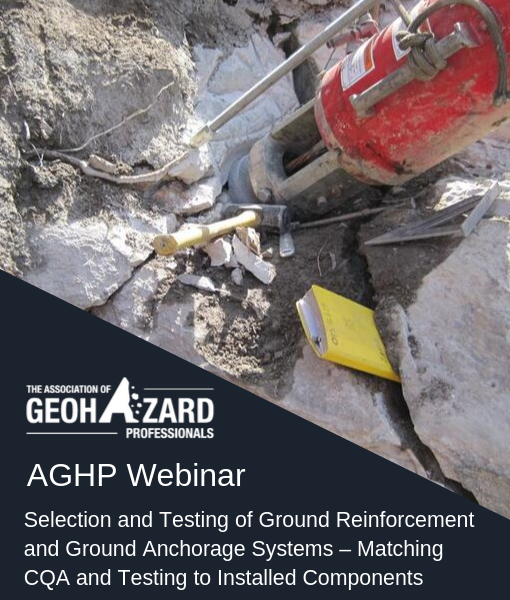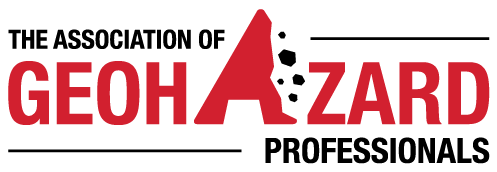View this webinar on-demand by logging into the Member Center. If you are not a member, we encourage you to join.
Selection and Testing of Ground Reinforcement and Ground Anchorage Systems – Matching CQA and Testing to Installed Components

Presented By:

David Scarpato, PE
President, Scarptec, Inc., Rock Engineering Solutions
Mr. Scarpato is President of Scarptec, Inc., a premier provider of rock engineering solutions for the civil, mining, and energy industries. He is a geological engineer by training, with graduate degrees in both engineering and geology, and has 20 years of nationwide experience with mining, heavy civil-construction, and infrastructure development type projects. His areas of expertise include rock mechanics, rockfall mitigation design, rock reinforcement design, excavation/blasting methods, slope stability evaluation and remediation, geologic hazards, icefall evaluation/mitigation, and rock mass characterization.

Martin Woodard, Ph.D., P.G., P.E.,
Chief Rockfall Engineer, GeoStabilization International
Marty is a professional engineer and engineering geologist whose experience includes investigation, design, and implementation of remediation techniques for unstable soil and rock slopes. He has significant experience in rock slope stability, rock slope rating systems, subsurface geology and geotechnical interpretation, landslide investigations, foundation analysis, and geologic reconnaissance. His expertise is in rock mass characterization, rock slope engineering and rock mechanics.
Marty has a B.A in Geology from the State University of New York at Potsdam College, M.S. in Environmental and Engineering Geosciences from Radford University (Virginia), and a Ph.D. in Engineering Geology from Kent State University in Ohio. He has authored the Rockfall Hazard Rating Matrix and Rock Slope Design Manual for the Ohio Department of Transportation. He has worked throughout the United States and South and Central America.

Peter C Ingraham, PE
Senior Geological Engineer and Principal
Mr. Ingraham is a Senior Geological Engineer and Principal with Golder Associates Inc in Manchester, New Hampshire. He has been involved with rock reinforcement and ground anchor design and testing for forty years.
